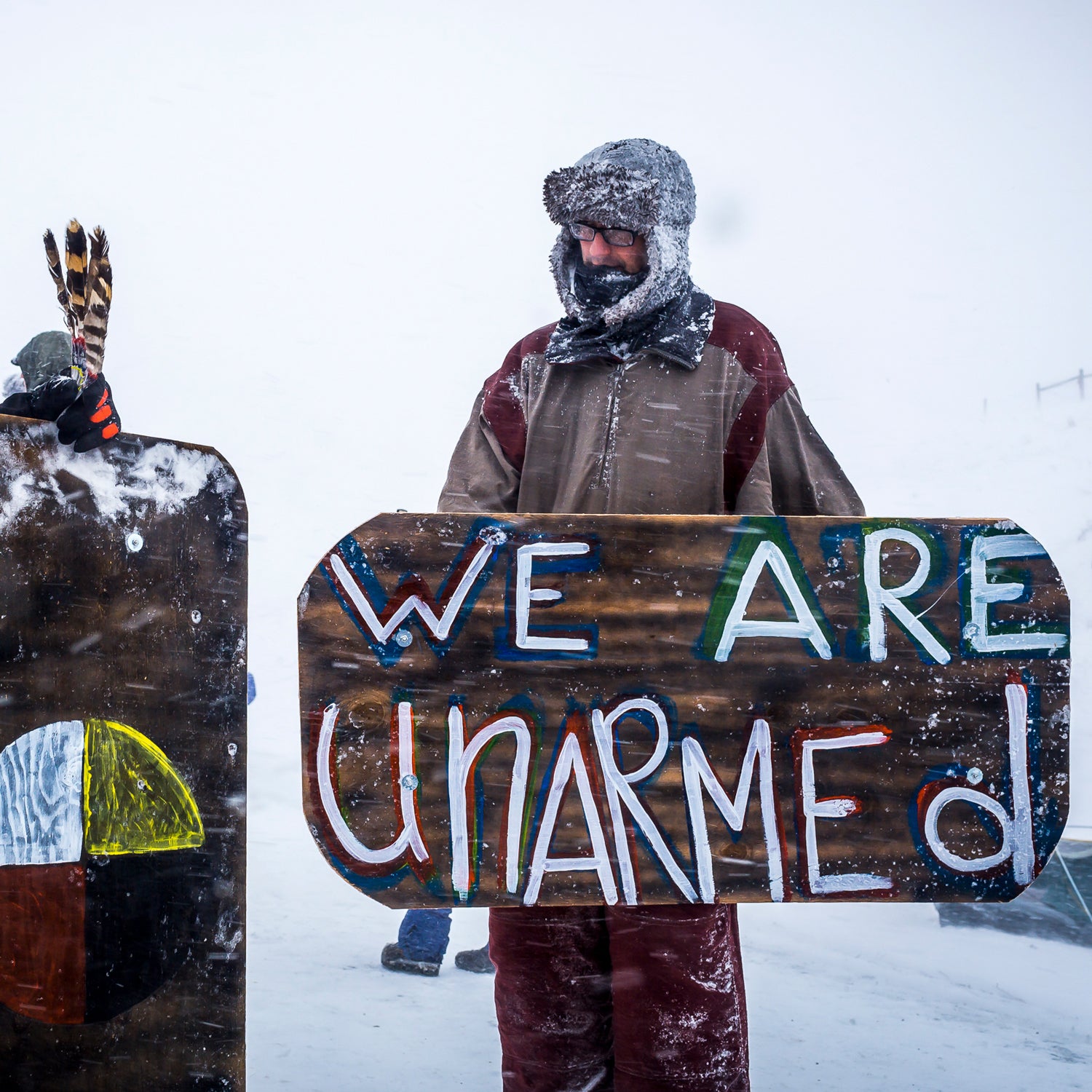Less than two months after the Army Corps of Engineers denied an easement required for the construction of the Dakota Access Pipeline, the Corps has and said it will grant the easement after all. Senator John Hoeven, a Republican from North Dakota, announced the news in a statement on Tuesday night. “This will enable the company to complete the project, which can and will be built with the necessary safety features to protect the Standing Rock Sioux Tribe and others downstream,” .��
The Senator’s conciliatory words are unlikely to calm any fears held by the Standing Rock Sioux or any of the thousands of other Native Americans who joined the tribe in protesting the pipeline in 2016—especially if they kept reading the Senator’s statement.��“We are also working with the Corps, the Department of Justice, the Department of Interior and the Department of Homeland Security to secure additional federal law enforcement resources to support state and local law enforcement,” it said.��“On Sunday, 20 additional Bureau of Indian Affairs law enforcement officers arrived at Standing Rock to assist local authorities.”
In effect, they’re preparing for a fight.��
The protest at Standing Rock began in April 2016 as the sort of environmental movement that rarely gets any national news coverage—a handful of people, an issue that few across the country fully understood, let alone had heard of. But by September, several thousand people, most of them Native Americans, had gathered at what was called the Oceti Sakowin Camp, or the Seven Council Fires.��
“They were joined by a smattering of earthy white folk and a crew of Black Lives Matters activists from Minneapolis. The camp was just outside the boundary on land administered by the Army Corps. State troopers blocked the highway to Bismarck, allowing protesters—or 'protectors,' as they insisted on being called—to leave but not return. In the U.S. District Court for the District of Columbia, the tribe’s lawyers argued that the pipeline would pollute their water and desecrate sacred burial grounds,” ���ϳԹ��� wrote in in early September.
On January 24, just four days into his administration, the President signed an executive order directing the Corps to “take all actions necessary” to move the pipeline forward.
The camp continued to grow—both in population and in the national awareness. Kristen Wiig wore a T-shirt that read “Stand with Standing Rock” when she in mid-November. The Burning Man crowd got wind of it and descended. A new environmental movement seemed to be forming, helped in part by some of the draconian practices—, —used by local law enforcement and company-hired heavies.��
What was even more remarkable was that they seemed to have won. On December 4, the Corps announced it had denied the easement. (Though it was still that could allow the pipeline to move forward in the future.) The camp celebrated.��
“The prayer circle was disbanding as everyone rushed to the fire. Standing Rock Chairman Dave Archambault was jubilant. 'We won!' he said. 'You can go home and spend the winter with your families!' Drums pounded, and the high wails of a victory song rang into the cold sunshine. Hundreds stomped their feet in a victory dance,” ���ϳԹ��� wrote of the scene.
But with the election of Donald Trump to the presidency, the victory seemed already at risk. On January 24, just four days into his administration, the President signed an executive order directing the Corps to “” to move the pipeline forward. A week later, they have done just that.��
Which does not necessarily mean that the pipeline will be built. The movement that successfully resisted and lobbied President Obama to urge the Corps to deny the easement remains intact, albeit dispersed. In the weeks after the Standing Rock camp disbanded, Native Americans have : along the Keystone route, in the Navajo Nation, and even in cities like Oakland, California.��
The recent announcement, then, is not a death knell for the movement that began at Standing Rock. Rather, it is a test. Will the Oceti Sakowin Camp again swell with protesters in the summer? Already, the Standing Rock Sioux Tribe has released a statement announcing their continued opposition to the pipeline. “While this news is disappointing, it is unfortunately not surprising,” the . “… We stand ready to fight this battle against corporate interest superseding government procedure and the health and wellbeing of millions of Americans.”
It is unlikely they will stand alone.


